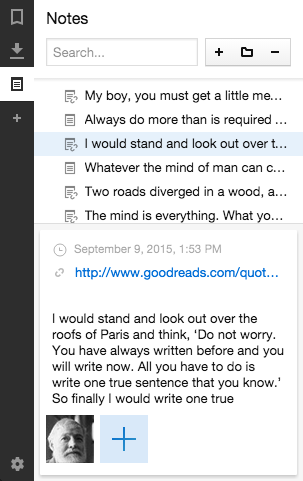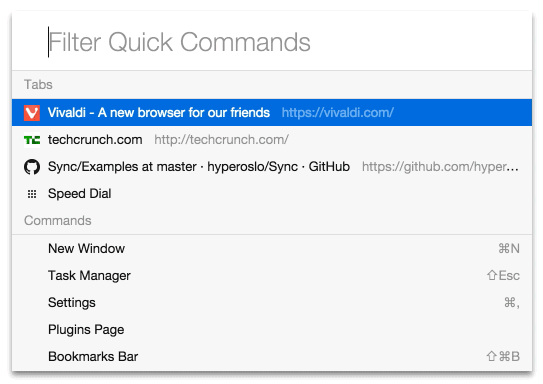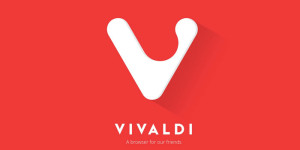Vivaldi Wants To Be the Ultimate Browser for Power Users
Vivaldi Wants To Be the Ultimate Browser for Power Users
Web Browsers have almost stopped innovating nowadays. The browsers of old, which were full of features had to leave them in order to improve speed and security. Most of the web viewership has moved to mobile devices. Most desktop browsers are based on Chrome (Chromium) and have more or less the same feature stack.
Some hard-core users must remember the old Opera which used to have a lot of features until it moved to the Chromium based web engine. Nevertheless, a new desktop browser has launched recently and it has the potential to take the throne from Google’s Chrome, at least for power users.
The browser is called Vivaldi and it was developed by a company headed by ex-CEO of Opera, Jon von Tetzchner. Jon says that it is a browser for power users – users who like to customise their browsers and have a long list of productive features. Loyal Opera users and a mass audience currently relying on Chrome and Firefox might finally have a worthy upgrade in the shape of Vivaldi.
Vivaldi had been in the beta testing phase for about a year, and only recently a stable version was released. It’s the first cross-platform browser in the market since Chrome launched in 2008. Most users will find the deep-rooted customisation options and powerful productivity features to be of good use.
It is still based on Google Chromium (open-source version of Chrome) so you can still use all the extensions available for Chrome. However, its aim is to offer so many features you won’t need many extensions. As far as the rest of the browser is concerned, it was built using web technologies like CSS, Node.js and React, a first of its kind.
Welcome Page
Browser setup and installation is pretty simple. As soon as the installation finishes, the browser asks you to choose your personalised layout via a few easy steps. It asks you to set the toolbar and tab bar locations. You can set them along any corner around the whole interface. Any changes made are instantly viewable. Finally, you get to choose colors, shading and background for the New Tab page.
Tab Stacks

One of the features which Opera got right before it switched to Chrome was Tab Stacks. Vivaldi brings them back, allowing users to have a clear and uncluttered experience.
All you need to do is drag an open tab over another one and you’ll create a stack (a single tab that contains two or more tabs). Resulting tab gets two or more lines at the top, depending on the number of tabs in a stack. Hovering over the lines gives a preview.
There’s another handy tool which automatically stacks similar tabs. All tabs from a site get automatically stacked e.g. all tabs from Facebook, Twitter can be stacked to save space on the Tab bar.
Tab Stack Tiling
If you are using a desktop or have big screen, you can tile all of your tabs and select one using the tab previews. These small windows are useful for power users who have multiple tabs open all the time.
Tab Hibernation
Chrome is a resource hog. If you have a few tabs open and have a few extensions you will quickly use up GBs of RAM. Vivaldi fixes that issue by bringing tab hibernation. Right click on a tab and select hibernate background tabs. All tabs will go into a sleep state and will reawaken as soon as you select one. This feature is really handy for those who want a good experience but not at the cost of heavy resource usage.
Side Panel Notes

Vivaldi also boasts a side panel. It can be used for viewing bookmarks, downloads and other stuff. One useful feature allows you to create and store notes. These can be ordinary notes or sections of a website, screenshot thumbnails and links. The added bonus is that the browser remembers the webpages where the notes were taken so you can simply click on a link or a screenshot and go back to the source website.
Side Panel Webpages
Users also get the option to add webpages to the side panel. It is a very useful feature and a user can add any web page they want as a custom-sized mini widget. The widget like panel can be used to check your Facebook or Twitter feed, messenger chats, hangouts conversations, email and much more while browsing the website on your current tab.
Once you get the hang of it, it’s difficult to imagine living without it.
Advanced Controls
A popup menu at the bottom of the browser offers a bunch of geeky and perky options. There’s a Page Actions option which lets you view every image on a page at an angle or change all the fonts on a website. You can even apply Instagram-like filters to webpages. A strange option lets you jumble up everything on a page. The popup menu and settings contain several other tweaks and customisations.
Some of these controls make sense, while others are plain useless. But what they do is give the user more control and choices, showcasing the browser’s potential.
Adaptive Interface

Vivaldi’s developer team has added a very unique and gorgeous option which lets the browser adopt the color of the webpage. Each tab changes its color to the most prominent color from a website.
Quick Commands

This is the killer feature for all the nerds out there who want everything done via their keyboards. Quick Commands lets the users search through open tabs, bookmarks, history, settings and everything within the browser with ease. It can be accessed by simply pressing F2 (can be set to a different key as well). If you want some changes, Quick Commands is malleable allowing the user to create their own commands.
Other Features
There are several other features as well. Here’s a brief list of the most prominent ones:
- Detailed Session Management: Save and open tabs from any particular session.
- Visual Tabs: Drag the tab bar to see a visual preview of all tabs
- Trash Can: Restore closed tabs or blocked popups
- Tab Cycling: Switch between open tabs easily
- Advanced Bookmark Manager: Bookmark nicknames and detailed manager
- Shortcuts: Customisable Mouse Gestures and Keyboard Shortcuts to all common tasks
- User Interface Scaling: Almost all parts of the UI can be adjusted
What’s Next
Vivaldi’s says it is also working on a mobile version of the browser and a few other projects, especially designed for power users.
Verdict
One thing to keep in mind when using the browser is that it’s “only” at version 1.0 yet. So there might be a few bugs here and there. The user experience and the feature list are definitely exemplary but some of our staff did mention sluggishness compared to Firefox and Chrome. We’d definitely encourage you to try it out and see for yourself though.
Vivaldi can be downloaded by visiting its homepage here. Do let us know in the comments about your experience with the new browser and whether it has the potential to beat the leading browsers in the market.

